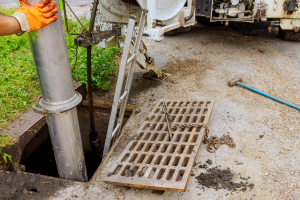Common Causes of Sewer Backups
Sewer backups are not only unpleasant but also dangerous, leading to health concerns, property damage, and costly repairs. Understanding the root causes of these backups is essential for homeowners, businesses, and municipalities to take preventative action. From clogged pipes to tree roots, several factors can disrupt the normal flow of wastewater.
How Sewer Backups Happen
Your home’s plumbing and the public sewer system work together to carry wastewater away from sinks, toilets, showers, and appliances. When something disrupts that flow, whether due to a blockage, break, or overflow, the waste has nowhere to go but back up into your home. Knowing the common causes of sewer backups can help you avoid them before they turn into serious emergencies.

1. Tree Root Intrusion
Tree roots naturally seek moisture and can grow into small cracks or joints in underground sewer pipes. Over time, these roots expand and block the flow of wastewater. Tree root damage often starts small but worsens over time, making early detection key.
2. Grease and Fat Buildup
One of the leading common causes of sewer backups is the improper disposal of grease, oils, and fats down the kitchen sink. These substances may seem harmless when poured in hot, but they solidify as they cool and stick to pipe walls. Over time, this buildup restricts water flow and traps other debris, forming major clogs.
3. Clogged or Collapsed Sewer Lines
Non-flushable items such as wipes, feminine hygiene products and even too much toilet paper can block pipes. In addition, aging pipes made from outdated materials can collapse under pressure, tree roots, or shifting soil, causing total sewer failure.
4. Heavy Rain or Flooding
In areas with connected sewer systems, heavy rainfall can overwhelm the sewer lines, forcing water and waste back into homes. Even separate systems can struggle during prolonged storms, especially if storm drains are clogged or sump pumps malfunction.
5. Improper Plumbing Connections
Connecting appliances like sump pumps or downspouts directly into the sanitary sewer system can lead to backups. These systems are designed for wastewater, not for large volumes of rainwater, so overloading them causes pressure to build and sewage to flow backward.

Warning Signs to Watch For
Catching sewer issues early can save you from costly damage. Keep an eye out for:
- Slow-draining sinks or tubs
- Gurgling sounds from drains
- Water backing up into toilets or basement drains
- Unpleasant odors coming from pipes
- Pools of water near floor drains
If you notice any of these signs, it’s best to act quickly.
Conclusion
Understanding the common reasons of sewer backups is the first step to prevention. Whether it’s grease buildup, aging pipes, or tree roots, regular maintenance and smart disposal habits can make a big difference. Protect your home by staying alert and addressing sewer issues before they escalate.
Call Now for Inspection or Service
Don’t wait for a minor issue to become a major disaster. If you’re experiencing slow drains, strange smells, or water backups, professional help is just a call away.
Call (207) 814-8908 now to schedule a sewer line inspection or emergency service. Fast action can prevent expensive damage and restore peace of mind.
Also Read:
